Abigail Williams was one of the first people "afflicted" during the Salem Witch Trials and went on to accuse 57 people of witchcraft. Then, she mysteriously vanished from the historical record.
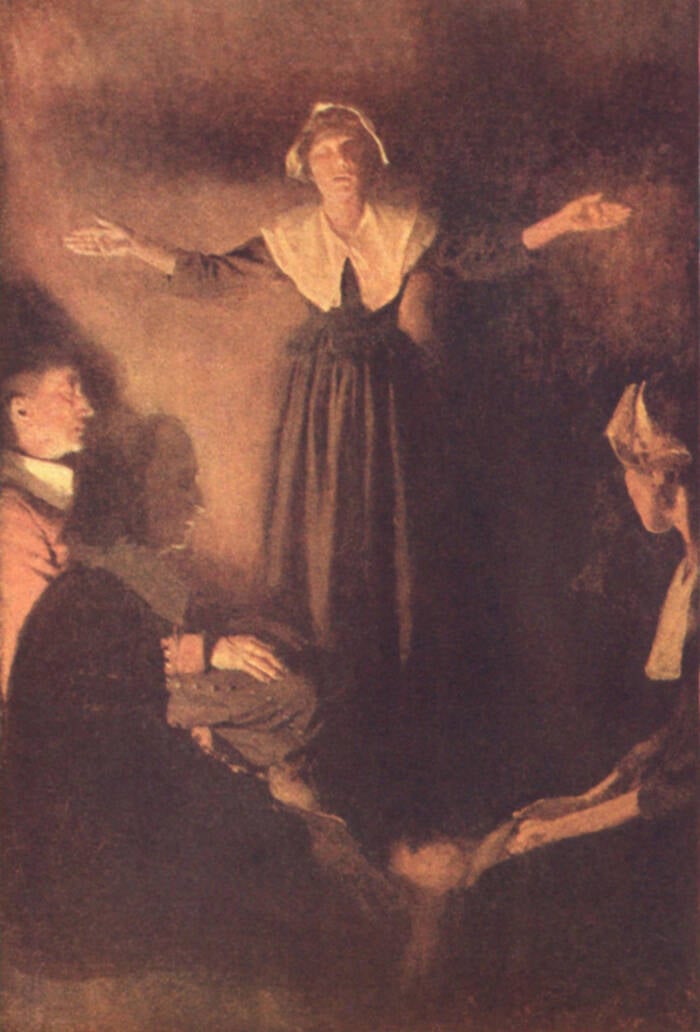
Everett Collection Inc/Alamy Stock PhotoSalem magistrates examine Rebecca Nurse, a woman Abigail Williams accused of being a witch.
Abigail Williams may have been only 12 years old during the Salem Witch Trials, but she played a pivotal role in the infamous witch hunt.
Born in the late 17th century, Williams was raised by the Puritan minister Reverend Samuel Parris in Salem, Massachusetts. In January 1692, Williams and Parris’ young daughter, Betty, began experiencing violent fits — convulsing, screaming, barking like a dog, speaking gibberish, and purportedly seeing invisible specters.
A local doctor declared witchcraft to be the cause. Before long, more and more young women and girls became “afflicted” with similar symptoms — and began to falsely accuse other Salem residents of witchcraft, sparking a wave of mass hysteria.
Abigail Williams was one of the most vocal accusers during the trials, laying accusations against 57 people. Strangely, she disappeared from the historical record after 1692. But while her fate remains a mystery, Williams’ involvement in the Salem Witch Trials had a lasting impact, contributing to one of the darkest chapters in early American history.
What Do We Know About Abigail Williams’ Upbringing?
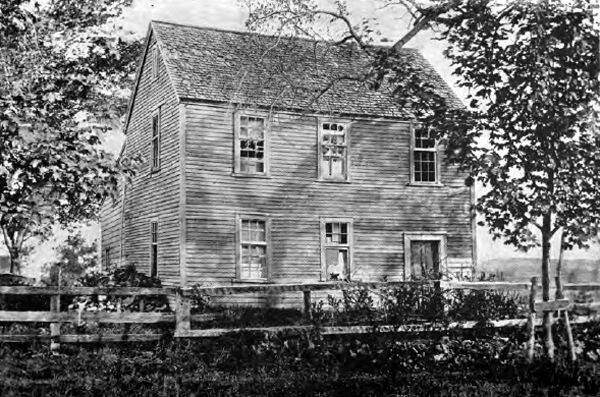
Public DomainThe renovated Parris home at Rear 67 Centre Street in modern-day Danvers, Massachusetts, where Abigail Williams lived during the Salem Witch Trials.
Though she was one of the most important figures of the Salem Witch Trials, Abigail Williams’ life is shrouded in mystery.
Williams was born on July 12, 1680. Historians believe her parents died when she was young, leaving her in the care of Reverend Samuel Parris, who is often referred to as her “uncle.” From a young age, Williams lived with Parris, his daughter Betty, and Parris’ slaves Tituba and John Indian in Salem, Massachusetts.
At the time, Salem was home to 2,000 people. The town was split into two areas: Salem Town and Salem Village. The area had been inhabited by European settlers since 1626 — most notably, the Puritans, a group of English Protestants who believed in strict adherence to the Bible.
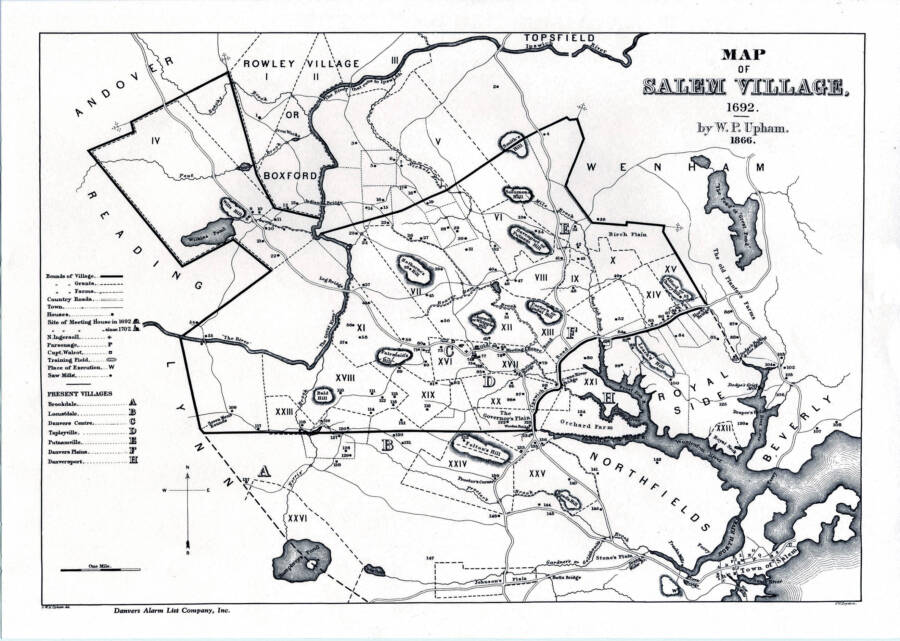
Wikimedia CommonsA map of Salem in 1692 with the locations of major landmarks, farms, and the dwellings of prominent residents at the time.
Despite growing up in this strict Puritan colony, Abigail Williams and several other young girls began to experiment with divination. One game, called the “Venus glass,” involved dropping egg whites into water and interpreting whatever shapes or symbols appeared to learn more about their future husbands.
One of the girls claimed to have seen her egg whites take the shape of a coffin. After this, the girls began exhibiting strange behavior.
Abigail Williams And Betty Parris Become ‘Afflicted’
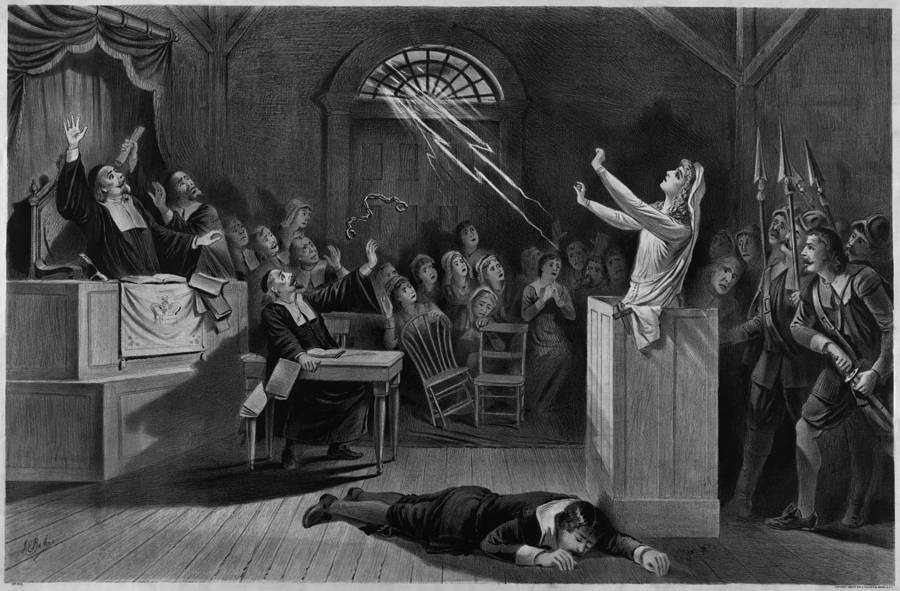
Wikimedia CommonsA depiction of a trial during the infamous Salem Witch Trials in Massachusetts in the late 17th century.
In January 1692, Abigail Williams and nine-year-old Betty Parris began having “fits.”
Reverend Deodat Lawson, a minister of Salem Village, recorded his observations of these bizarre episodes after visiting the Parris home.
He noted that upon his arrival, Abigail Williams had what he described as a “grievous fit.” She would rush around the room, “sometimes making as if she would fly, stretching up her arms as high as she could, and crying ‘Whish, Whish, Whish!’ several times.” The young girl also barked, cried out in pain, and claimed to see invisible spirits.
A local doctor eventually visited the Parris home and, unable to determine a natural cause for the girls’ bizarre symptoms, declared that their behavior was the result of witchcraft. According to Samuel Page Fowler in his book Account of the Life and Character of Rev. Samuel Parris of Salem Village:
“Mr. Parris appears to have been much astonished, when the physicians informed him, that his daughter and niece were, no doubt, under an evil hand. There is evidence that Mr. Parris endeavored to keep the opinion of the physicians a secret, at least, till he could determine what course to pursue. At this time, Mary Sibley, a member of his church, gave directions to John Indian on how to find out, who bewitched Betsy Parris and Nabby Williams.”
They decided to try an unusual tactic to pinpoint the girls’ tormentors: “witch cakes.” To make a witch cake, one would mix a sample of urine from a “bewitched” victim with rye meal and ashes. This concoction would then be baked into a cake and fed to a dog. The belief was that, under the spell of the witch cake, the dog would reveal the identity of the witch who had caused the “affliction.”
This witch test ultimately failed to reveal the witches’ identities. Instead, Abigail Williams and Betty Parris accused Tituba, a woman enslaved by Reverend Parris, of witchcraft, followed by two other women: Sarah Good and Sarah Osbourne.
On March 1, 1692, town magistrates arrested the three women. During Tituba’s interrogation, she shocked the town by admitting to being a witch and warning the magistrates that there were more like her among the residents of Salem.
This confession sent the town into a frenzy, culminating in one of the most tragic mass hysteria events in American history.
The Salem Witch Trials Begin In Massachusetts
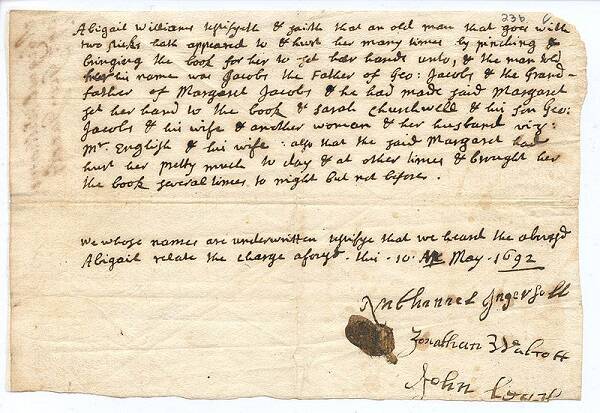
Public DomainOne of Abigail Williams’ testimonies against a Salem resident named George Jacobs Jr. during the Salem Witch Trials.
The Salem Witch Trials took place between 1692-1693, during which time some 200 people were accused of practicing witchcraft. Twenty-five were killed.
Abigail Williams became one of the main accusers, often targeting Salem residents who openly criticized the trials or her testimonies. In total, she accused 57 people of performing witchcraft, testifying in seven of the cases.
According to the Salem Witch Museum, Williams was said to be “quite without mercy,” making a great spectacle of her supposed “affliction” and coming up with a number of specific and outlandish allegations about the “witches” she accused.
For instance, she claimed that she saw Elizabeth and John Proctors’ specters, that she witnessed dozens of people participating in a blood-drinking ritual, and that Rebecca Nurse had attempted to force her to sign the Devil’s book.
Abigail Williams’ last court appearance took place during the indictment of John Willard and Rebecca Nurse on June 3, 1692. After this point, she mysteriously disappeared from the historical record.
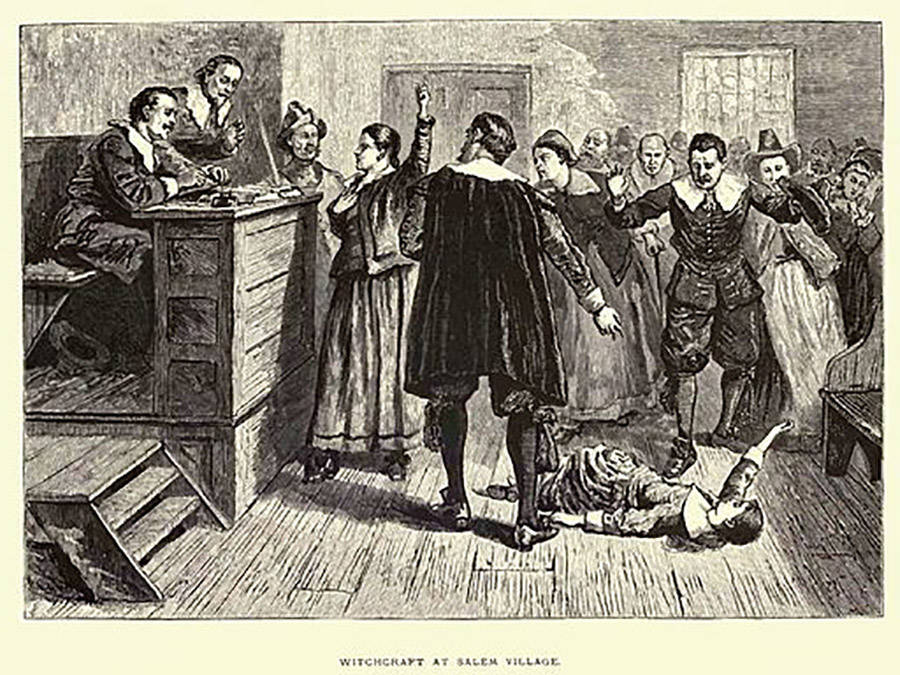
Wikimedia CommonsA depiction of the rancor and chaos of the Salem Witch Trials.
The Legacy Of Abigail Williams
It’s not clear what happened to Abigail Williams after 1692. Some have suggested that Reverend Parris sent her away to escape the tumult of the trials, as he purportedly did his own daughter, Betty.
One book, The Salem Witch Trials: A Day by Day Chronicle of a Community Under Siege by Marilynne K. Roach, claimed that Williams died tragically young:
“Abigail Williams, haunted to the end, apparently died before the end of 1697 if not sooner, no older than seventeen.”
What’s more, Reverend John Hale, who took part in the trails, wrote that one young accuser suffered from “diabolical manifestation” until her untimely death. However, it’s unclear whether he was referring to Abigail Williams or to some other “afflicted” girl.
Over the years, historians have puzzled over what caused Williams and the other afflicted girls to start the Salem witch hunt in the first place. Researchers have attributed it to everything from mass hysteria to hallucinations caused by exposure to the toxic ergot fungus.
However, others have pointed out that Williams had been a poor orphan with little social standing — and that she may have made the accusations to gain some power and influence in Salem society.
If that’s the case, it appears she got her wish. Abigail Williams made a lasting mark not only on her community, but on American history.
If you liked this article on Abigail Williams, read about seven lesser-known witch trials that took place throughout history. Then, learn about the historical origins of witches.





